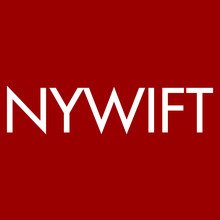Peter Cooper and The Cooper Union
/In their 2024 Best Colleges edition, U.S. News and World Report has ranked The Cooper Union for the Advancement of Science and Art, better known as Cooper Union, number 2 in the category of Regional Colleges North. Its alums include notable individuals including Thomas Edison, 39 Fulbright scholars, a Nobel Prize winner, three MacArthur Fellowship recipients, and more. It is clearly an institution to be marveled at. Its founder, Peter Cooper, would be proud!
Born in New York City in 1791, Peter Cooper was both a thinker and a man of action. As an industrialist, he purchased his first factory when he was thirty. As an inventor, he designed and built a steam engine, and, with his wife, they invented Jell-o.
As a politician, he was active in the anti-slavery movement and later ran for president in 1876, but he lost. In this capacity, he was outdone by his son and son-in-law, both of whom served as mayors of New York City.
However, Cooper's enduring legacy, aside from Jell-o, is Cooper Union. For much of his life, he was very interested in adult education. He had served as head of the Public School Society, which ran New York City's free schools using city money. This experience made him aware of École Polytechnique in Paris and its practice of offering free practical education to adults.
With this inspiration, he opened Cooper Union in 1859. In a progressive move for the day, the school was open to both men and women, although initially, 95% of the students were male. Discrimination based on ethnicity, religion, or sex was expressly prohibited.
The first open-admission night class boasted 1400 students. Unlike other libraries in the city, the school's library was open until 10:00 at night so that working people could use it after work hours.
The tradition of free tuition was continued until the fall of 2014. The change was necessary because of the financial impact of construction loans taken before the Great Recession. That said, about half of the current students still attend tuition-free, and the college is currently implementing a financial plan to restore full-tuition scholarships for all its undergraduate students by 2029.
With an eye on elevating the entire community, the school's Great Hall, located on the basement level of the Foundation Building, has served as a platform for some of the greatest names in American history. The list includes hallowed names such as Frederick Douglass, Mark Twain, Susan B. Anthony, Edward Kennedy, Joseph Campbell, Ralph Nader, and many more. Moreover, it has hosted eight U.S. presidents, including Abraham Lincoln.
Today, Cooper Union consists of three schools: the Irwin S. Chanin School of Architecture, the School of Art, and the Albert Nerken School of Engineering. And the school has received A+ grades for academics and diversity from the college ranking website Niche.
Even today, 141 years after his death, Peter Cooper's name is a part of New York City. It can be found in many places throughout the city. From Cooper Park in Brooklyn to Cooper Square in Manhattan. But no memorial serves this man's legacy better than The Cooper Union for the Advancement of Science and Art and its mission to inspire our students to achieve their full potential and apply their expertise and leadership for the benefit of society and humanity.
Broadway Stages encourages the pursuit of Science, Technology, Engineering, Arts, and Mathematics (STEAM) programs and values diversity and inclusivity. We are excited to highlight this institution that offers all of these things and more, and is located in our own backyard. Explore The Cooper Union and all they have to offer today.







